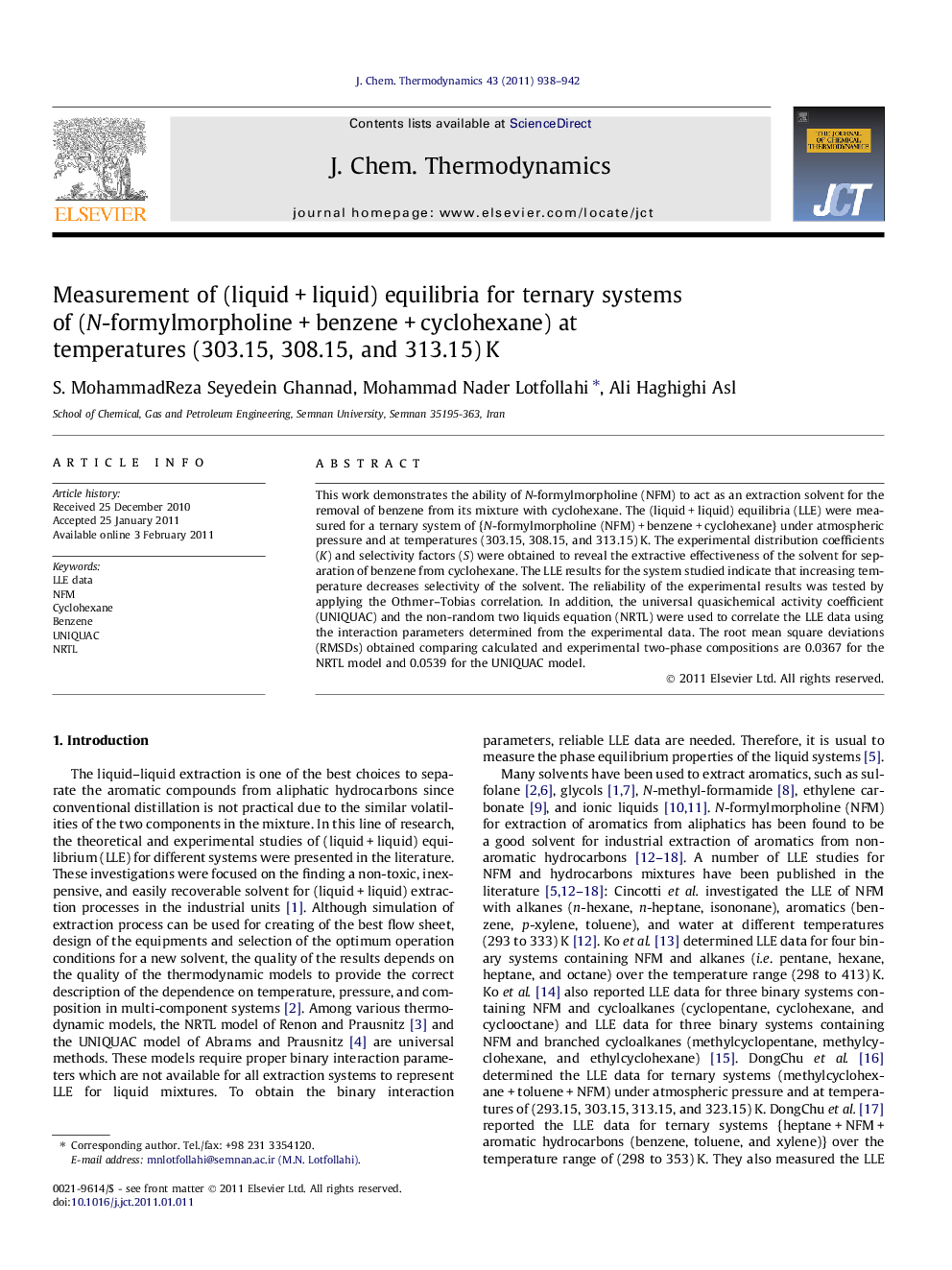| Article ID | Journal | Published Year | Pages | File Type |
|---|---|---|---|---|
| 216637 | The Journal of Chemical Thermodynamics | 2011 | 5 Pages |
This work demonstrates the ability of N-formylmorpholine (NFM) to act as an extraction solvent for the removal of benzene from its mixture with cyclohexane. The (liquid + liquid) equilibria (LLE) were measured for a ternary system of {N-formylmorpholine (NFM) + benzene + cyclohexane} under atmospheric pressure and at temperatures (303.15, 308.15, and 313.15) K. The experimental distribution coefficients (K) and selectivity factors (S) were obtained to reveal the extractive effectiveness of the solvent for separation of benzene from cyclohexane. The LLE results for the system studied indicate that increasing temperature decreases selectivity of the solvent. The reliability of the experimental results was tested by applying the Othmer–Tobias correlation. In addition, the universal quasichemical activity coefficient (UNIQUAC) and the non-random two liquids equation (NRTL) were used to correlate the LLE data using the interaction parameters determined from the experimental data. The root mean square deviations (RMSDs) obtained comparing calculated and experimental two-phase compositions are 0.0367 for the NRTL model and 0.0539 for the UNIQUAC model.
Research highlights► LLE were measured for (NFM+benzene+cyclohexane) at temperatures (303.15, 308.15 and 313.15) K. ► UNIQUAC and NRTL models were used to correlate the LLE. ► The reliability of the experimental data was tested by the Othmer-Tobias correlation. ► The obtained RMSDs are 0.0367 for NRTL model and 0.0539 for UNIQUAC model.
